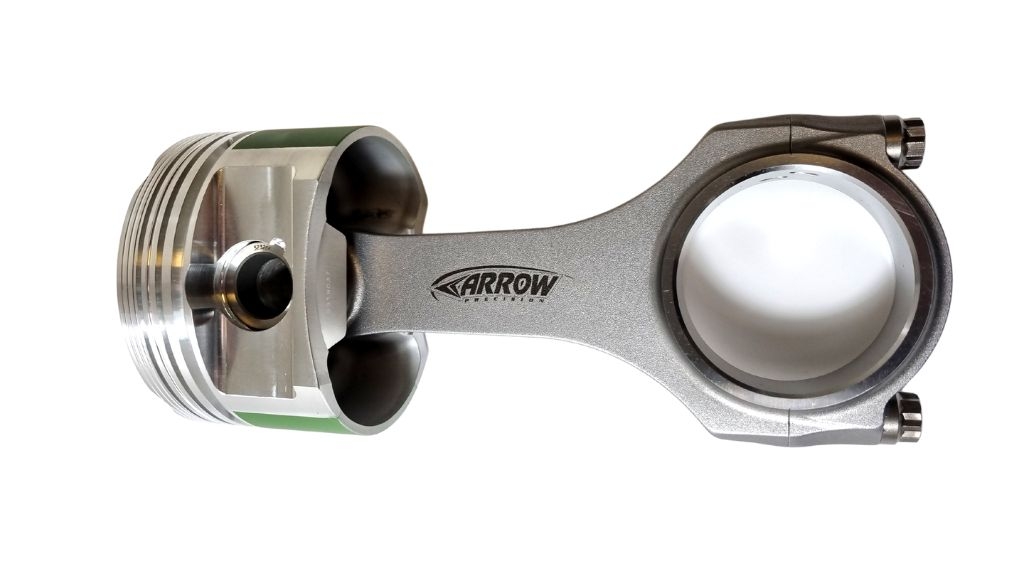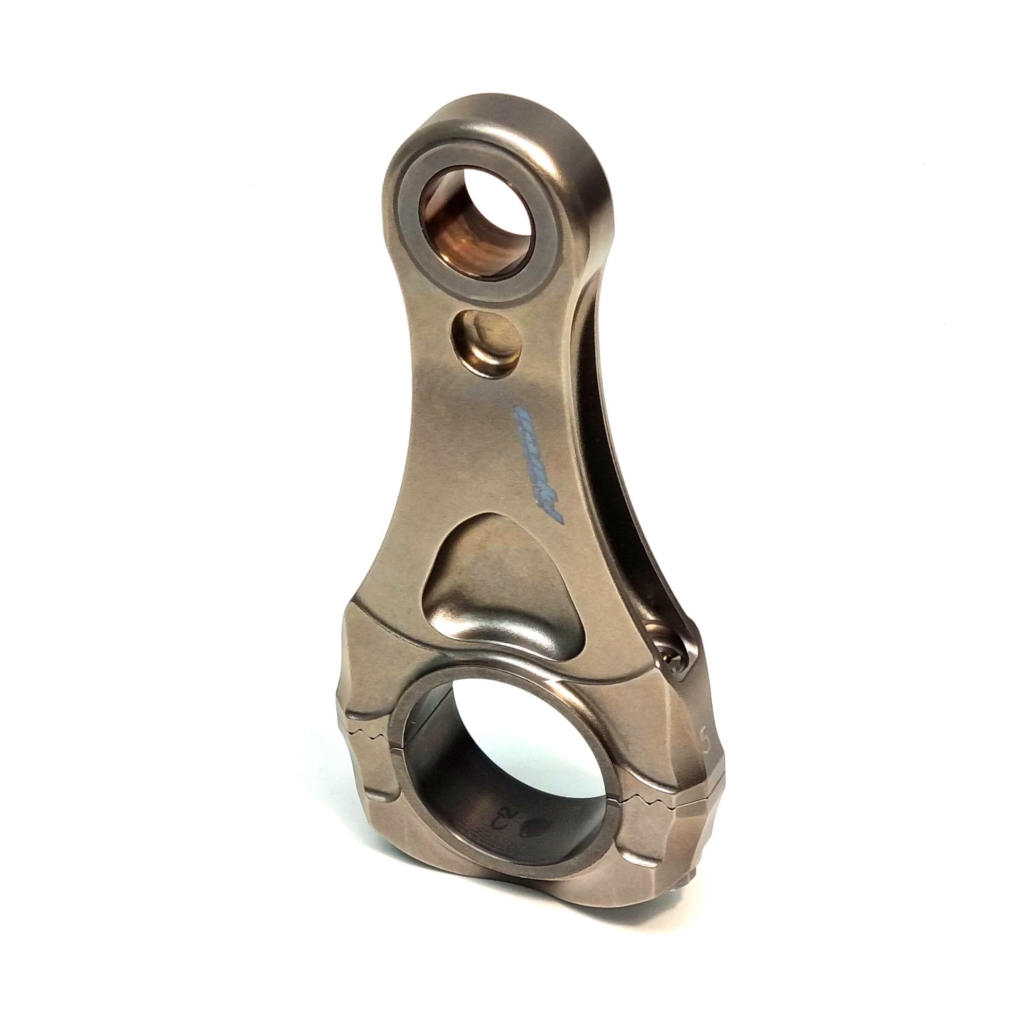H-SECTION CON RODS
Are H-section con rods any good? There seems to be a lot of false information on various social media channels. We take a look at why you shouldn’t trust everything you read on the internet, and offer our opinion on this much-maligned engine component.
A couple of weeks ago we received an ‘interesting’ comment on one of our Facebook posts (writes Modatek’s Matt Grant). The post featured a photo of one of our Arrows Precision connecting rods for the Cosworth YB engine.

The comment caught our attention, mainly because it was completely untrue:

(An H-section or H-beam rod resembles the letter H when looking down the rod with the journal axis horizontal, whereas an I-section rod looks like the letter I. To put it another way, an H-section rod has the lightening pockets on the sides, and an I section rod has the lightening pockets on the front and rear.)
The comment was accompanied by a photo of a bent con rod attached to a cracked piston. I did a Google reverse image search, and I discovered that the first use of this image didn’t attribute the failure to the con rod design (it was probably caused due to a hydraulic event). But someone else then used this photo and claimed that the failure was because the con rod was H-section. Then another armchair expert claimed that “all H-section rods are made in China”, and the myth has then snowballed across the internet.
Now, as far as debates go, this one is probably not that important in the grand scheme of things, but I thought it was interesting to see how some people can latch on to untruths on the internet, and then profess to know everything there is about, in this case, con rod design.
In my experience, I’ve not seen any evidence to say that all H-section rods are bad, or that they are infinitely inferior to I-section rods. A great number of engines that I have worked on have used H-section rods, and with no failures that can be traced back to the con rod design. In fact, some designs, like the Cosworth CA Formula 1 con rod, transition between the H-and I-style designs along its length to provide optimal weight reduction and distribution.

But some might say that I’m going to biased, given that we sell H-section rods, so I thought it might be handy to refer to an in-depth article in Race Engine Technology issue 75, written by David Cooper. Here’s what the article has to say about con rod sections:
“The most obvious variation in con rod design is in the cross-sectional shape used for the main beam section. While a wide range of possible section shapes are available, and can be used – including solid sections of various geometry – the current preferred choice is between either H-beam or I-beam sectional shapes, with virtually all manufacturers queried on the topic for this article supplying either or both types.
“Both can be engineered to provide sufficient strength and stiffness for virtually any application, although neither shape lends itself particularly to higher load applications, for example, than the other.
“Instead it is a case of optimising the chosen section to match the end use. For example, an I-beam rod may have a slightly lower weight for similar stiffness in some applications, whereas an H-beam rod will typically be narrower for a similar stiffness, especially if arranging the rod onto the crankshaft is a significant concern, as in a single-cylinder engine where crank cheeks are close together.
“Ultimately though, comparable performance is achievable with both designs, and the devil is really in the particular design details, the materials used and the manufacturing route/cost requirements.”
The article goes into more detail about the merits of H- and I-section designs, so I won’t reproduce all of it here, but if you do want to learn more then I highly recommend getting hold of a copy.
So there you have it, not everything you read on social media is true. And maybe give H-section rods an easier time next time you see them posted on a company’s social media channels.
We are Cosworth’s official distributor for their historic engine parts, and we supply a wide range of parts for a number of different Cosworth historic engines, from BD, YB and DFV through to the more recent F1 engines like the CK, TJ and CA. Our mission is to help our customers build better engines by supplying high quality parts backed up with a design consultancy that utilises over 25 years experience in top level motorsport.


 Jon Lesko, Infrared Detection & Analysis Systems
Jon Lesko, Infrared Detection & Analysis Systems
What about Pauters cross beam design? A slight weight penalty but an interesting design.
The first use of H section rods I can find is early 70’s when Carillo made them to replace the tubular section rods in the DGS Offenhausers that were failing as the power levels went up with turbocharging.
I worked on Offy’s in the 70’s. Most of the failures we saw at high boost were piston failures caused by a lean condition. It didn’t matter what rod was used when that piston failed the rod was right behind it. The failure was not due rod design. The Offy rod and the Carrillo H beam worked. As I recall the Carrillos were heavy. I saw both types of rod bent in half.